“Hey Kowalski, you out there? ” — Cleavon Little as Super Soul in Vanishing Point
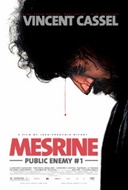 |
Mesrine Part II: Public Enemy # 1 (2008, France) I mentioned in my review of Mesrine: Part I, Killer Instinct how the film rapidly moved from one Mesrine-committed crime to another, with very little in between: all shooting, no introspection. Part II follows the same rapid-fire trajectory, but was a bit weaker than Part I because abrupt changes in Mesrine’s colleagues in crime went unexplained. One minute he’s breaking out of prison with Francoise Besse, the next minute Besse has disappeared and Mesrine is with new accomplices. The director’s method of moving quickly from one violent crime to another created more confusion in Part II than it did in Part I, at least for this viewer. Still a very watchable crime epic, and hey, the later parts of The Godfather were never as good as the first part either! |
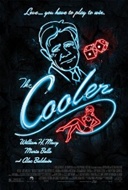 |
The Cooler (2003, USA) This isn’t a bad movie, it’s just that it could have been so much better. Macy is typecast as a loser schmoe; Alec Baldwin and casino owners in general are typecast as old school mafioso knee-breakers. My disappointment started with the change in Macy’s luck, as the movie went from being a gritty behind-the-scenes look at gambling to a standard Hollywood love-conquers-all schmaltzfest. The perfect ending would have been for the bent cop to have shot Macy and Bello and taken the money. Instead we get the happy-happy treatment. Director Wayne Kramer, you have no balls. |
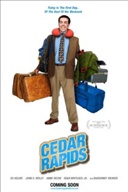 |
Cedar Rapids (2011, USA) Is there such a thing as Dark Comedy Lite? Cedar Rapids is somewhere in that ballpark. Ed Helms plays his role from The Office: the good-natured straight arrow dork, right down to the sweater. John C. Reilly plays the raffish drunk who, along with Anne Heche, helps set Ed Helms free … except Ed is still a good-natured straight arrow dork in the end, as we all want him to be. The Midwest plays the stereotyped Midwest, a crime-free land of grain silos and white people. So where is the darkness of which I speak? Ed discovers corruption, gets drunk, smokes crack, and gets laid. Well, okay, I guess I’d rather watch this version of the Midwest than the one from In Cold Blood. There’s some existential angst here, but no sense of loss; it’s really not very dark when you come right down to it. Most viewers will walk away thinking Cedar Rapids is sweet and kind-hearted. |
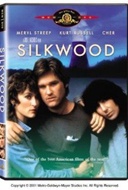 |
Silkwood (1983, USA) I’ve added a few older movies to my Netflix queue. I remember watching Silkwood when it was new and thinking it was pretty political, but on this second viewing, decades later, it comes across as less political and more of an interesting story. Meryl Streep plays Karen Silkwood, an everyday working woman who gradually becomes alarmed over safety lapses at a nuclear plant and gets involved with the workers’ union, alienating her lover and co-worker (Kurt Russell) and becoming persona non grata with management and many of her co-workers. Eventually a Washington DC-based union official, clearly using her to advance his own career, talks her into sneaking evidence of a safety coverup by plant officials out of the plant and delivering it to a New York Times reporter. She dies in a car crash on her way to meet the reporter. As I recall, all these things were based on the true story of Karen Silkwood. There’s no firm evidence Silkwood was murdered, but that’s what everyone believed at the time and the movie strongly suggests that’s how it went down. Streep and Kurt Russell are great in this movie; Cher is just sort of there and I’m not even sure why. Good movie; well worth watching, especially if you didn’t see it first time around. |
 |
Road to Perdition (2002, USA) Back in my drinking days I fell asleep in front of any number of VHS tapes and DVDs, so when I watched this one again it was as if I’d never seen it before. But now that I’ve really seen it, maybe drinking wasn’t the problem the first time around. It could well be that the movie simply put me to sleep from boredom. Road to Perdition, IMHO, isn’t very good. It’s like one of those Clint Eastwood-directed films, slow and arty and pretentious, and Tom Hanks as a bad guy? Come on, already. |
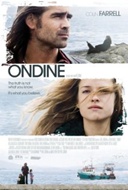 |
Ondine (2009, Ireland) I loved the scenery: the Irish coastal village, the rugged coast, the sea. Colin Farrell was pretty good too. But the story is a contrived fairy tale from beginning to end, with “contrived” the operative word. If I hadn’t felt so manipulated I might have enjoyed it more, but they went for the heartstrings so cynically I found myself pushing away. Sorry, this sort of sentimental tripe is not for me. |
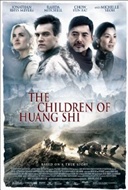 |
The Children of Huang Shi (2008, Australia) A visually spectacular film with a cheesy script. Although based on a true story, it’s obvious the writers and director took significant liberties with the facts, turning it into a feel-good overcoming-adversity morality play. Witness: the absurdly handsome and urbane Chinese revolutionary who repeatedly saves George Hogg; the white blonde goddess who appears out of nowhere to dispense favors on the hero à la Tarzan’s Jane; the rich Chinese opium trader who lavishly donates food, money, and clothing to the orphanage in exchange for a few ratty vegetables; the wreck of the orphanage itself, transformed overnight into a model institution by dint of five short scenes of Jonathan Rhys-Meyers wielding a shovel with his sleeves rolled up. Just too easy, just too perfect. See it for the scenery, not for the story. |
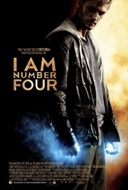 |
I Am Number Four (2011, USA) I planned to read the book first, but didn’t get around to it. I Am Number Four is from a young adult book of the same name, and is based on a science fiction premise (nine young aliens were sent to Earth after their own planet was destroyed by other aliens; now the other aliens are here, seeking out and killing the nine, one by one). The movie was satisfying, I’m happy to say, and I will read the book, which sounds like it will become a series. Think of Buffy the Vampire Slayer; this movie is very much along those lines. Good effects, pretty good acting, plenty of action and innocent teen love. What’s not to like? I’ll tell you what. Those “high school” kids? They all look like they’re in their late 20s or early 30s! |
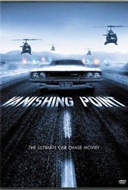 |
Vanishing Point (1971, USA) The great 1971 classic, watched again after a break of many years, still gripping and exciting. What happened to counter-culturalism in America? We had it then, in spades. Now we’re all too busy trying to find work, I guess. But back to the movie … there are some sappy parts, in fact nearly all the parts dealing with Kowalski’s past, probably unnecessary to the movie in the first place. The rest is a pure rush, and damn suspenseful (particularly the scenes of the crowd building outside the studio of radio station KOW in Goldfield, Nevada). The “alternate ending” shown at the very beginning of the movie really sets it apart, and people will be debating its meaning for years. This is a true cult classic, and even though it’s evocative of a particular period and place in American culture, timeless and universal. |
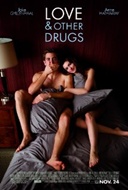 |
Love and Other Drugs (2010, USA) A movie more up my wife’s alley than mine, but it has two very good actors (Anne Hathaway and Jake Gyllenhaal) and, at least for the first two-thirds of the movie, an interesting storyline. I could have done without Josh Gad, and I wish there had been a second sexual tryst going on between Jake’s character and the receptionist in the doctor’s office, but what I really really wish is that they hadn’t grafted the ending of The Graduate into this movie — oh so predictable. And guys? There’s a buttload of T&A in this movie, no doubt to get us to watch it. |